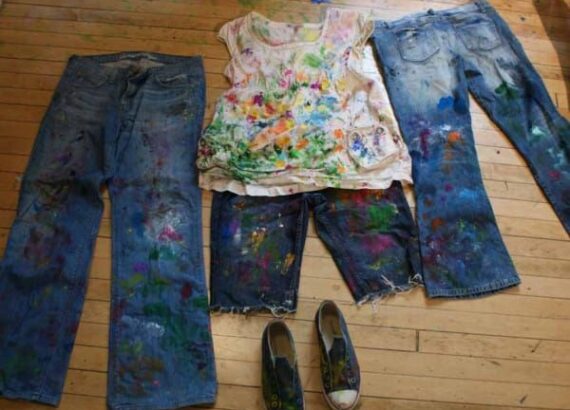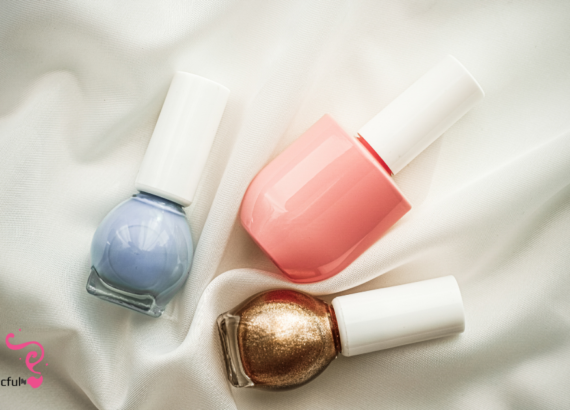Can I Use Matte Acrylic Paint on Fabric? Unveiling the Creative Possibilities

Acrylic paint enthusiasts often find themselves wondering about the versatility of their favorite medium. One common question that arises is, “Can I use matte acrylic paint on fabric?” Let’s dive into the world of fabric painting and explore the exciting possibilities that matte acrylic paint holds.
I. What is Matte Acrylic Paint?
Matte acrylic paint is a versatile and popular medium among artists, known for its distinctive non-reflective finish. Unlike glossy counterparts, matte acrylic provides a smooth and flat surface, offering a unique touch to various artistic endeavors. Its opaque nature and vibrant colors make it a favorite choice for those looking to add depth and sophistication to their creations.
II. Can You Use Matte Acrylic Paint on Fabric?
Understanding Fabric Compatibility
Before dipping your brushes into the world of fabric painting with matte acrylics, it’s essential to understand the compatibility between the two. Not all fabrics react the same way to paint, and some may absorb or retain color differently. We’ll explore the nuances of fabric types and how matte acrylic paint can be a suitable match.
Advantages of Using Matte Acrylic Paint on Fabric
Matte acrylic paint brings a plethora of advantages when applied to fabric surfaces. From vibrant color retention to a soft, touchable finish, we’ll delve into the perks that make matte acrylic a preferred choice for fabric artists. Understanding these benefits can enhance your creative process and lead to stunning results.
Potential Challenges and Solutions
Every artistic journey comes with its set of challenges, and fabric painting is no exception. In this section, we’ll identify potential issues you might encounter when using matte acrylic paint on fabric and provide practical solutions to ensure a smooth and enjoyable painting experience. From color bleeding to uneven application, we’ve got you covered.
III. Steps for Using Matte Acrylic Paint on Fabric

Step 1: Preparing the Fabric
Before you embark on your fabric painting journey, proper preparation is key. Clean the fabric thoroughly to remove any dust, dirt, or sizing agents that might interfere with the paint’s adhesion. If the fabric is new, consider washing it to eliminate any factory finishes. For better results, iron the fabric to ensure a smooth painting surface.
Step 2: Choosing the Right Matte Acrylic Paint
Not all matte acrylic paints are created equal. Take time to select high-quality paints with good pigmentation. Consider the fabric’s texture and color when choosing your palette. If in doubt, do a small test on a scrap piece of fabric to gauge how the colors interact with the material.
Step 3: Applying the Paint
The application process is where your creativity takes center stage. Also, use a variety of brushes or sponges to achieve different textures and effects. Experiment with layering colors and blending techniques. Whether you’re aiming for precision or embracing a more abstract approach, let your imagination guide your brushstrokes.
Step 4: Drying and Curing Process
Once your masterpiece is complete, patience becomes your greatest ally. Allow the painted fabric to air-dry thoroughly. Follow the recommended drying times on the paint’s label. After drying, consider heat-setting the paint to ensure it becomes a permanent part of the fabric. This can typically be done by ironing the painted area, following the paint manufacturer’s instructions.
IV. Tips and Tricks for Successful Fabric Painting
Mixing Colors

Creating a unique color palette is one of the joys of fabric painting with matte acrylics. Experiment with mixing colors to achieve custom shades that complement your artistic vision. Start with primary colors and gradually blend them to create a spectrum of hues. Keep a record of your color combinations for future reference, allowing you to reproduce specific tones in later projects.
Creating Textures
Texture adds depth and interest to fabric paintings. Explore various techniques to create texture with matte acrylic paint. Use different brush strokes, sponges, or even stencils to introduce diverse textures to your artwork. Don’t be afraid to layer and experiment; the tactile element can elevate your fabric painting to a new level, making it visually captivating and touchable.
Fixing Mistakes
Mistakes happen to even the most seasoned artists, but the beauty lies in the ability to rectify them. If you make an unintended mark or a color doesn’t sit right, fear not. Depending on the fabric type and the stage of drying, mistakes can often be corrected. For wet paint, a damp cloth can wipe away errors. If the paint is dry, carefully layer over it with the desired color. Remember, each mistake is an opportunity to enhance your skills and add a unique touch to your creation. Embrace the imperfections!
V. Matte Acrylic Paint vs. Other Fabric Paints
Matte vs. Glossy
Understanding the distinction between matte and glossy fabric paints is crucial for achieving the desired aesthetic in your projects. Matte acrylic paint offers a non-reflective, flat finish, providing a sophisticated and subtle appearance. On the other hand, glossy fabric paints provide a shiny, reflective surface, adding vibrancy and catching the light. Consider the mood and style you want to convey in your artwork when choosing between matte and glossy finishes.
Matte vs. Fabric Medium
While matte acrylic paint can be used on fabric alone, some artists prefer to mix it with fabric medium for added flexibility and softness. Fabric medium enhances the paint’s adherence to fabric fibers, making it more pliable and less prone to cracking. The choice between using matte acrylic paint independently or with fabric medium depends on the desired texture and the specific demands of your project.
VI. DIY Projects with Matte Acrylic Paint on Fabric
Custom T-Shirts
Embarking on a popular and rewarding DIY project, consider transforming plain t-shirts into personalized works of art. Additionally, utilize matte acrylic paint to craft unique designs, slogans, or intricate patterns on your shirts. This not only allows you to express your individual style but also helps you stand out, turning your t-shirts into wearable art that vividly reflects your creativity.
Decorative Pillows
Add a touch of artistic flair to your living space by painting decorative pillows with matte acrylics. Experiment with geometric designs, abstract patterns, or even personalized messages. Your custom-designed pillows will not only enhance your home decor but also serve as conversation starters.
Canvas Bags
Turn plain canvas bags into stylish accessories with the magic of matte acrylic paint. Whether you opt for a minimalist approach or unleash your creativity with intricate designs, matte acrylics adhere well to canvas, providing a durable and visually appealing result. Personalized canvas bags make for excellent gifts or unique statement pieces in your daily ensemble.
VI. Inspiring Examples of Matte Acrylic Paint on Fabric
Artists and Their Unique Creations
Dive into the world of creativity and be inspired by artists who have pushed the boundaries of fabric painting using matte acrylics. Explore a gallery of unique creations, from intricate designs to bold expressions of individual style. Witness how matte acrylic paint transforms fabric into a canvas for artistic innovation. These examples will spark your imagination and motivate you to embark on your own fabric painting adventures.
VII. Safety Measures and Precautions
Ventilation and Workspace
Ensuring a safe and comfortable workspace is paramount when working with matte acrylic paint on fabric. Adequate ventilation is crucial to minimize exposure to fumes from the paint. Choose a well-ventilated area or use fans and open windows to promote air circulation. Additionally, wear a mask if needed, especially when working with paint for extended periods. A safe and well-ventilated workspace contributes to a healthy and enjoyable fabric painting experience.
Washing and Care Instructions
Preserving the beauty of your matte acrylic-painted fabrics involves proper washing and care. Follow specific washing instructions provided by the paint manufacturer to maintain color vibrancy and fabric integrity. In general, hand washing with mild detergent is recommended for painted fabric items. Turn garments inside out before washing and avoid using bleach or harsh chemicals. Taking care of your painted creations ensures they remain vibrant and visually appealing over time.
Conclusion
In conclusion, the answer to the question “Can I use matte acrylic paint on fabric?” is a resounding yes. With proper preparation, technique, and a dash of creativity, matte acrylic paint opens up a world of possibilities for fabric artists. So, grab your brushes, choose your favorite colors, and embark on a fabric painting adventure!
FAQs
Q1. Is matte acrylic paint safe for wearable items?
A1. Matte acrylic paint is generally safe for wearable items, but it’s essential to follow proper curing and sealing processes.
Q2. Can I mix matte acrylic paint with other mediums?
A2. Yes, you can experiment with mixing matte acrylic paint with other mediums to achieve unique effects.
Q3.How do I seal matte acrylic paint on fabric?
A3. Sealing matte acrylic paint involves using a fabric sealant or medium, ensuring longevity and washability.
Q4. Will matte acrylic paint crack on fabric?
A4. Proper application, drying, and sealing can prevent matte acrylic paint from cracking on fabric.
Q5. Can I use matte acrylic paint on leather?
A5. While primarily designed for fabric, matte acrylic paint can be experimented with on leather surfaces for certain projects.








